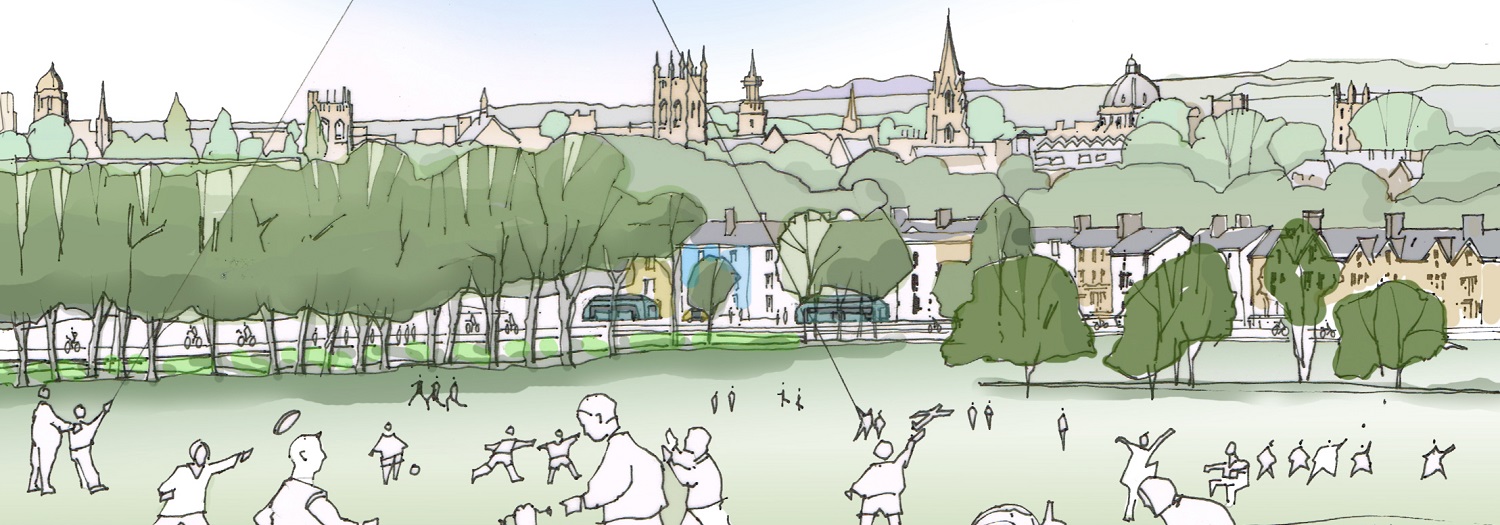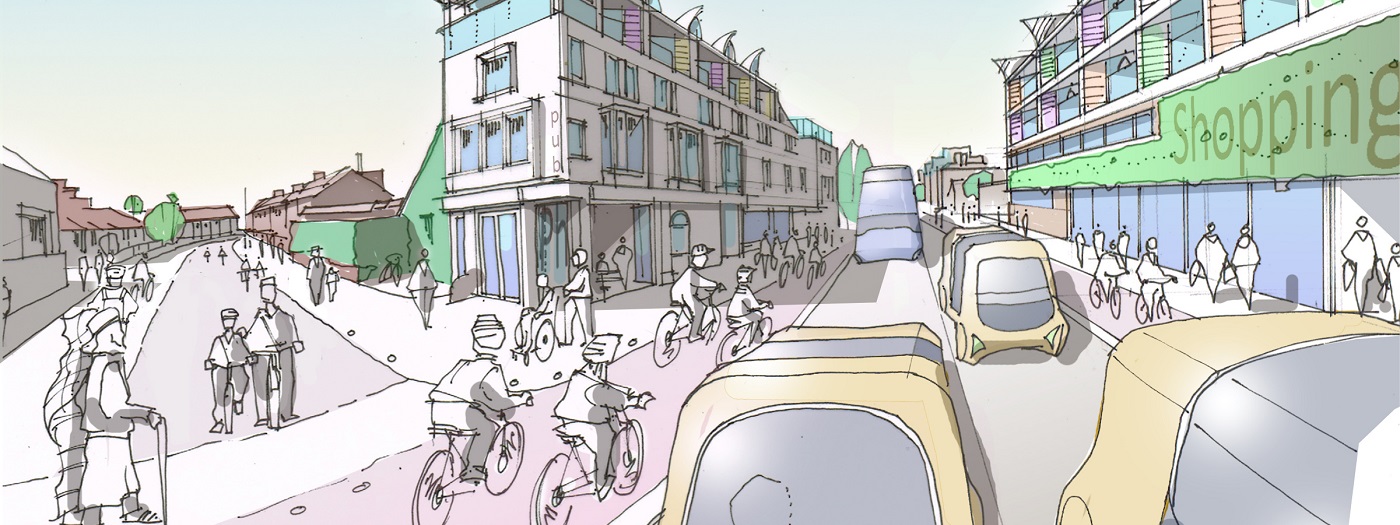Oxford2050: Built and natural environment

- The city’s heritage and natural environmental will be protected
- Oxford will be an affordable place to live
- Oxford will be a clean and accessible city
Oxford’s population will continue to grow over the next thirty years as people are drawn to live, work and study in our attractive, vibrant and thriving city. The growth in population will be managed sustainably to protect the city’s natural environment and world-famous heritage and to allow many people to live near their place of work.
Oxford’s unique architecture – which tells the city’s story and defines its identity – will be protected and conserved for future generations. Where there are modern needs, technology and improvements will be retrofitted sympathetically without damaging the building’s character. This architecture will also continue to underpin, inform and enrich decisions about new developments in Oxford.
The city’s world-famous skyline – the inspiration for generations of artists – will also be protected, with Carfax Tower continuing to guide the height of any new buildings in the city centre.
“Oxford’s heritage, its historic buildings, spaces, parks and gardens, archaeology and landscape should continue to underpin, inform and enrich decisions about significant change and new development within the city.”
Clare, Oxford OX2
Our many high-quality green spaces and waterways will remain easily accessible to all residents, and they will provide opportunities for recreation, relaxation and joy for residents and visitors. Their use will be carefully managed to protect the city’s rich biodiversity and habitats, and nurture Oxford’s ecology and the rare plant and animal species which are found here.
Oxford will be a clean and accessible city. Petrol and diesel vehicles will be superseded by clean energy vehicles; air and noise pollution will be substantially reduced; and the move away from privately-owned cars will allow streets to be reclaimed for cycling, pedestrians and the community.
“Climate change is a fundamental threat to human existence, and ‘intelligent’ cities like Oxford should be leading the way.”
Thomas, Oxford OX2
The problems from global climate change will be facing Oxford in 2050. Flood alleviation and management schemes, along with the continued protection of the floodplain, will seek to ensure that the city is not at risk of flooding; more trees will be planted in and around the city area to reduce flooding and over-heating; resource use will be circular and waste will be reduced or recycled; more food and renewable energy will be produced locally, to reduce food miles and to protect the city from any global instability caused by climate change. Oxford will be an environmental champion amongst cities across the world.
Oxford will be an affordable place to live.
But, as Oxford has already built on all available space up to the city limits, and to protect the city’s natural environment, heritage and skyline, housing density will be increased, particularly in district centres of East Oxford, Headington, Cowley, and Summertown, where more homes will be in low-rise apartment blocks. New homes will also be built on about five per cent of Oxford’s Green Belt, on land of low environmental value, to provide homes near people’s jobs and the existing public transport services; those parts of the Green Belt that are of high landscape and environmental value will be protected.
“My daughter, Oxford born and bred, has to buy as far away as Banbury to get somewhere she can afford. She has good wages – more than I have earned ever – but she can’t afford even a one-bedroom property in Oxford.”
Alison, Oxford OX5
Homes for key workers – from specialisms including medicine, education and social care – will be prioritised, and there will be a range of high-quality and affordable housing types near workplaces for all ages in Oxford. Those in the private rented sector will be better protected, with fairer and longer-term tenancies.
New and existing homes will be carbon neutral or net positive, with solar panels, green roofs, high-quality insulation and battery power storage required for new-builds and retrofitted on existing homes. Houses will not just be built to last, but will be built as flexible lifetime homes, with, for example, corridors wide enough for prams or wheelchairs. The range of available housing will also mean people can easily move home and there is little underuse.
“Housing should be high density, based on the European model: nice plazas, well-designed buildings with underground parking, and communal and social space. This supports local businesses on the ground floor and reinforces community.”
Paul, Oxford OX4
The communities within the city will have good access to a range of shops, places to eat and drink, and cultural and leisure activities. Building on the lessons from Barton Healthy New Town, community and health will be built into the fabric of new and existing estates. Estates will include a good range of green spaces, cycle routes and sports activities, and social housing and privately-owned homes will be mixed.
Oxford’s large student population will live mainly in purpose-built accommodation near campuses and colleges to reduce the demands placed on the private rental market and nurture university communities.
Homelessness for Oxford residents will be a thing of the past.
“Our highest priority should be to build more houses in or near Oxford for the people who work in the city. It will involve densification and building in the Green Belt, which can be done without diminishing the green spaces available to the public.”
Tom, Oxford OX2


